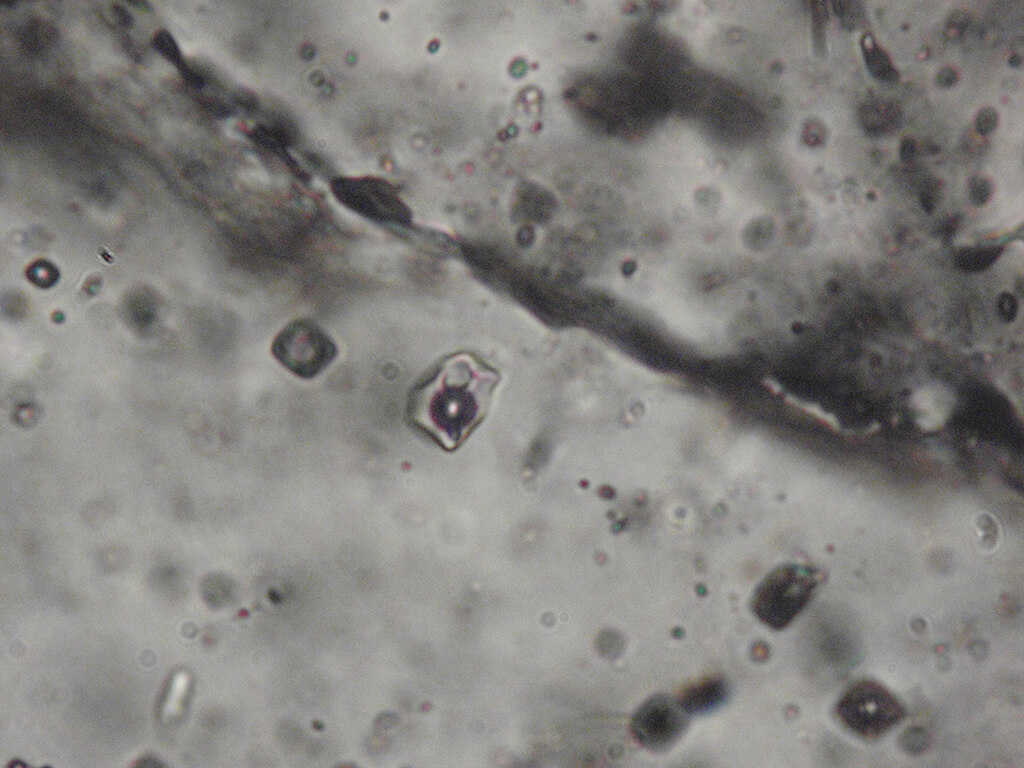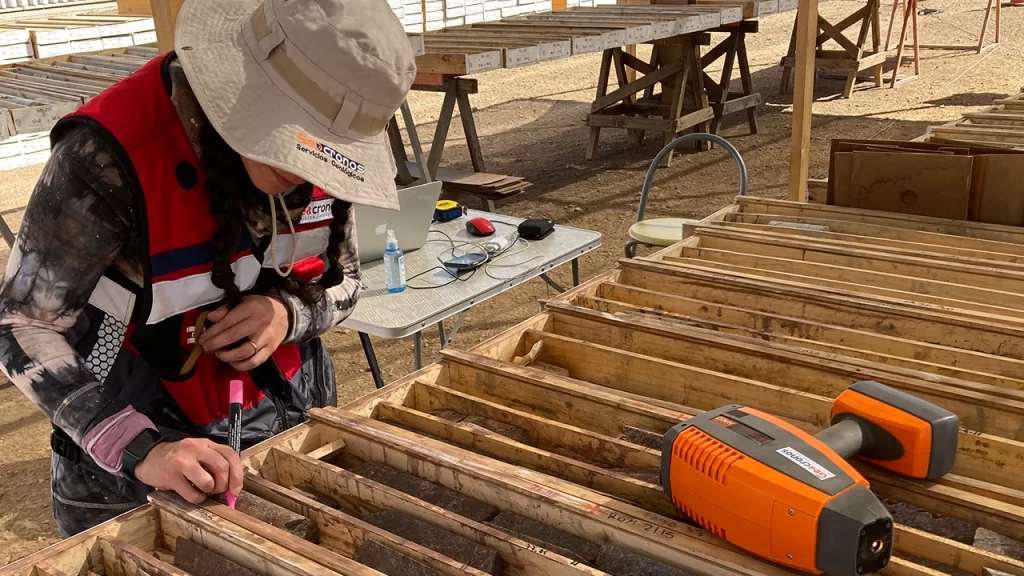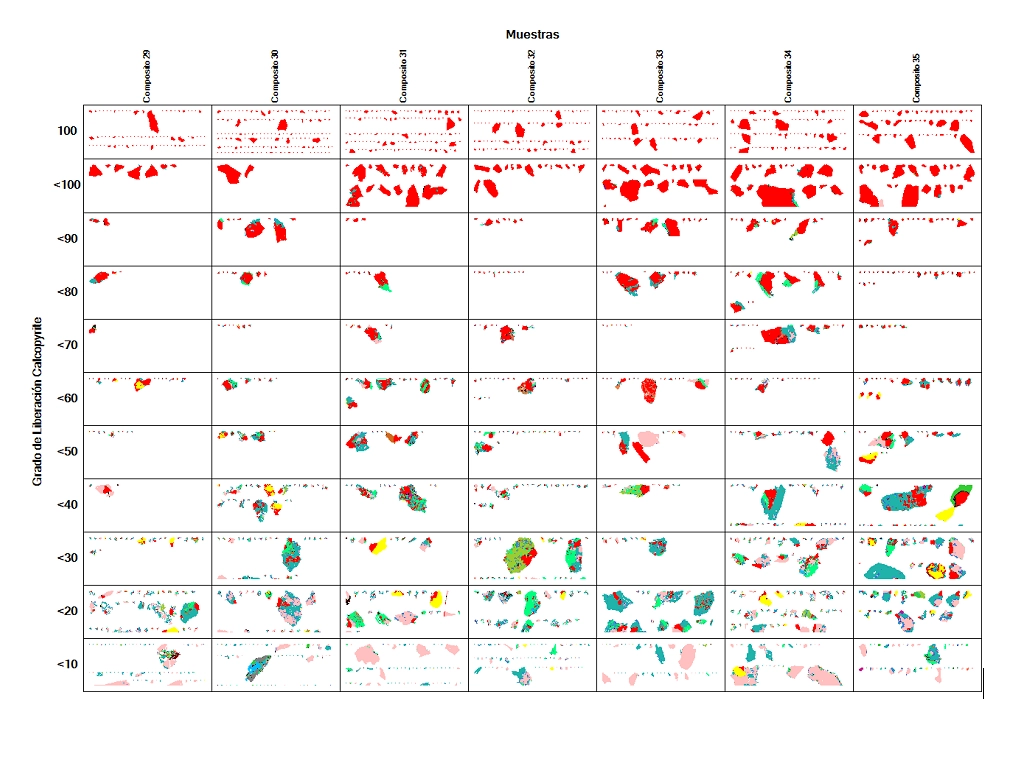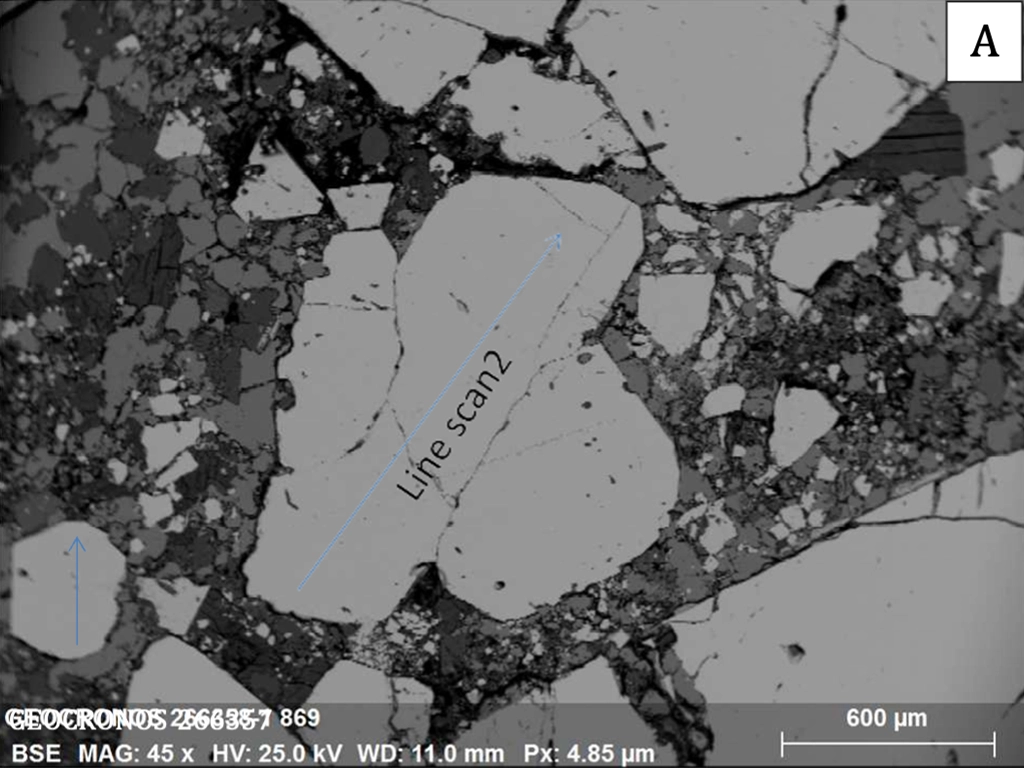
Fluid inclusions are tiny bubbles of fluids that were trapped during the formation of a crystal and its study provides information about the physical-chemical conditions in which the mineral was formed.
Thanks to the analysis of fluid inclusions it is possible to determine: formation temperature, fluid salinity, pressure, depth of location as well as other information. These parameters are very useful in mining exploration as they provide answers to questions about the environment of the deposit formation and generate guidelines for exploration.


